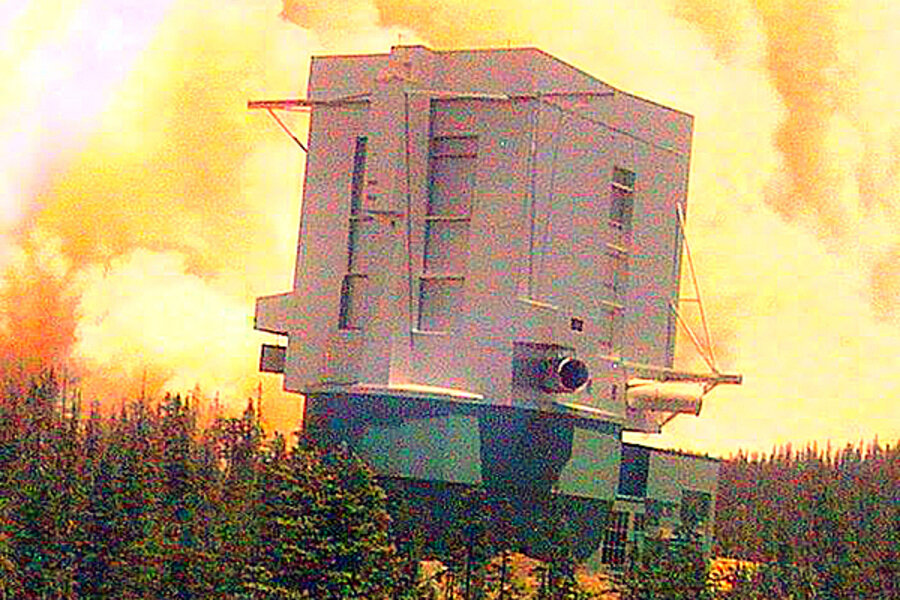'Large Binocular Telescope' delivers images three times sharper than Hubble
Loading...
A telescope in Arizona has taken the sharpest pictures yet of deep space from Earth with a new system that provides a level of clarity never seen before.
The technology relies on adaptive optics – a mechanism that allows a telescope's mirror to bend in order to compensate for the blurring of light as it passes through the Earth's atmosphere.
The new system, installed on the $120 million Large Binocular Telescope (LBT) on Mount Graham in Arizona, has delivered images three times sharper than the Hubble Space Telescope, LBT scientists said. And that's with only one of its twin 27.6-foot (8.4-meter) mirrors working.
"The results on the first night were so extraordinary that we thought it might be a fluke, but every night since then the adaptive optics have continued to exceed all expectations," said astronomer Simone Esposito, leader of a team from Italy's Arcetri Observatory of the Istituto Nazionale di Astrofisica (INAF). "These results were achieved using only one of LBT's mirrors. Imagine the potential when we have adaptive optics on both of LBT's giant eyes."
INAF collaborated with the University of Arizona's Steward Observatory to build the adaptive optics device, called the First Light Adaptive Optics system (FLAO).
The Hubble Space Telescope has achieved groundbreaking images thanks to its perch above Earth's atmosphere. It and other space telescopes also have another advantage over ground-based observatories: They can focus on one celestial object for hours or even days, steadily collecting light to form a brighter image.
Bad weather can often interrupt observing sessions from Earth, and even under perfectly clear conditions, a ground-based optical telescope scanning the night sky must stop observing when the sun rises.
Yet the Hubble telescope itself – with a main mirror 7.9 feet (2.4 meters) wide – is somewhat small compared to the largest ground-based observatories. However, those Earth-bound telescopes are hampered by the atmosphere, which blurs light passing through much the way water blurs the view from the bottom of a swimming pool.
That's where adaptive optics come in.
The LBT has a 3-foot (0.91-meter) wide secondary mirror built in. This mirror, only 0.06 inches (1.6 millimeters) thick, is so pliable that it can easily be bent by devices pushing on the 672 tiny magnets glued to its back.
A special sensor detects atmospheric distortions in real time and controls the mirror to adjust its position to compensate, effectively canceling out the blurring. The mirror can make adjustments every one-thousandth of a second, with accuracy to better than ten nanometers (a nanometer is one millionth the size of a millimeter).
Astronomers measure image sharpness with a term called the Strehl ratio, where 100 percent would be a perfect image. Without adaptive optics, most ground-based observatories have a Strehl ratio of less than 1 percent.
With the new system, the LBT has achieved peak Strehl ratios of 82 to 84 percent.
"This is an incredibly exciting time as this new adaptive optics system allows us to achieve our potential as the world's most powerful optical telescope," said Richard Green, director of the LBT. "The successful results show that the next generation of astronomy has arrived, while providing a glimpse of the awesome potential the LBT will be capable of for years to come."





